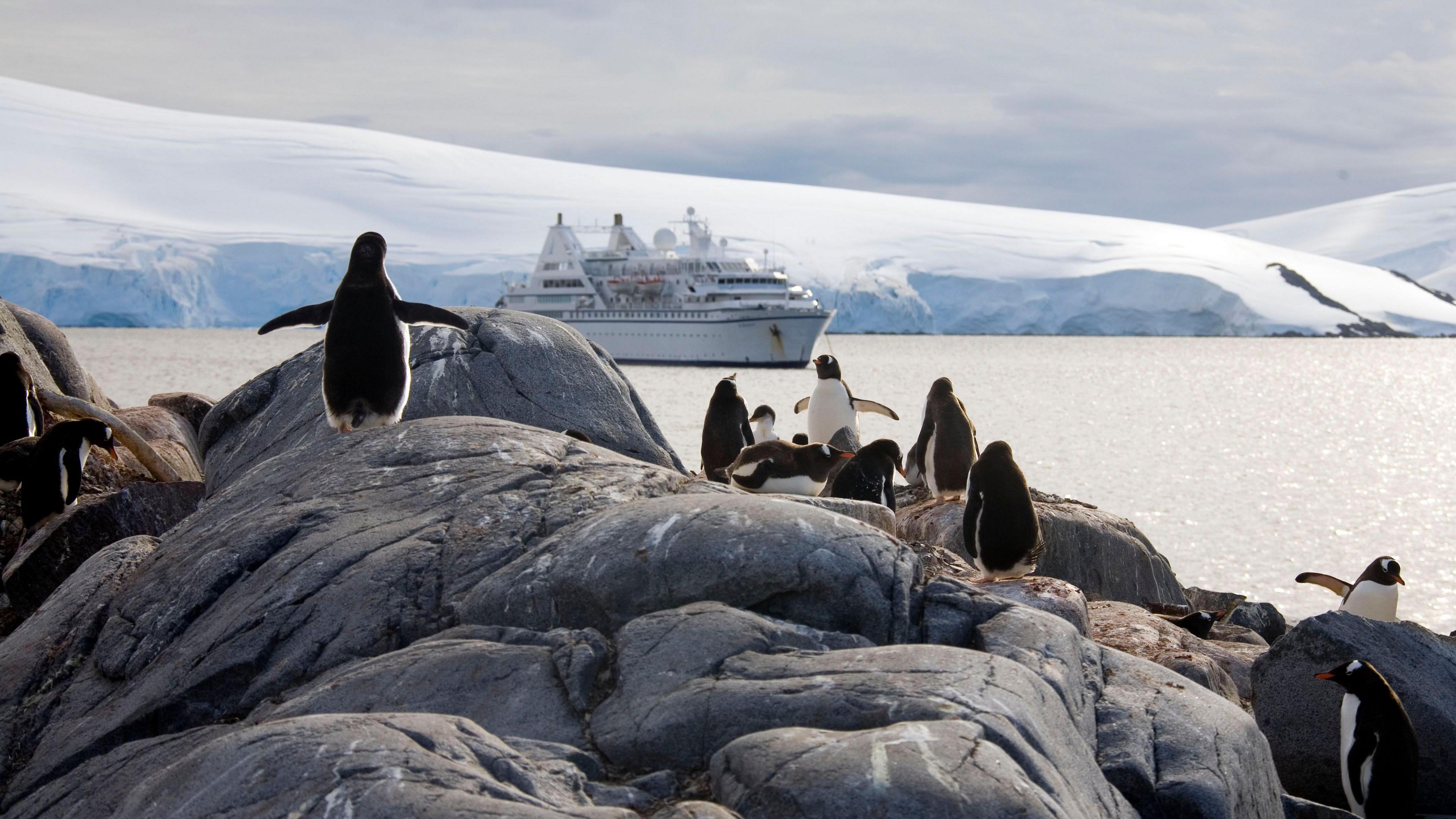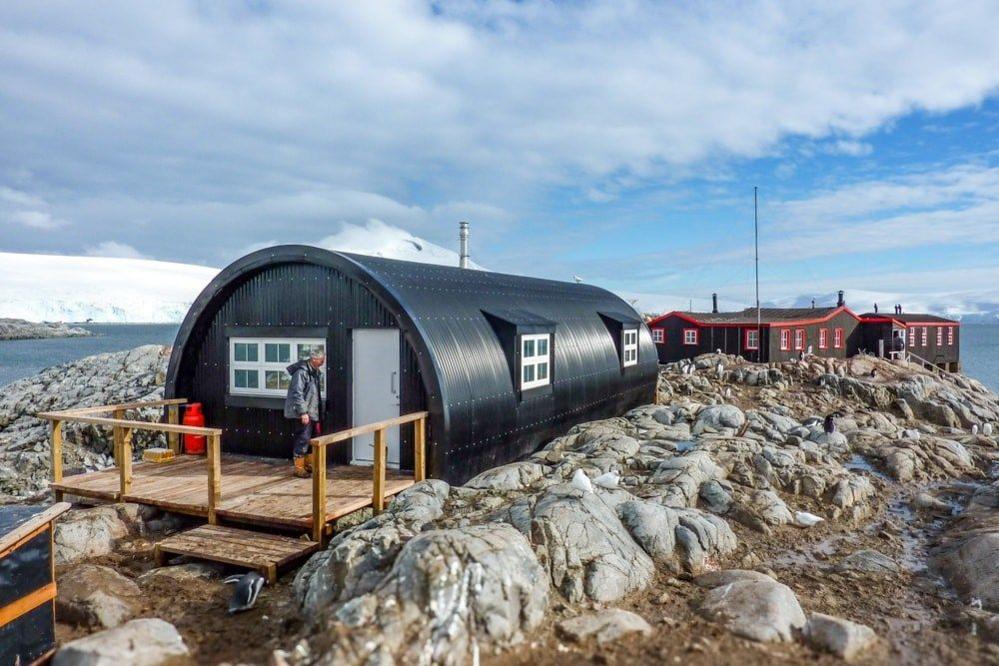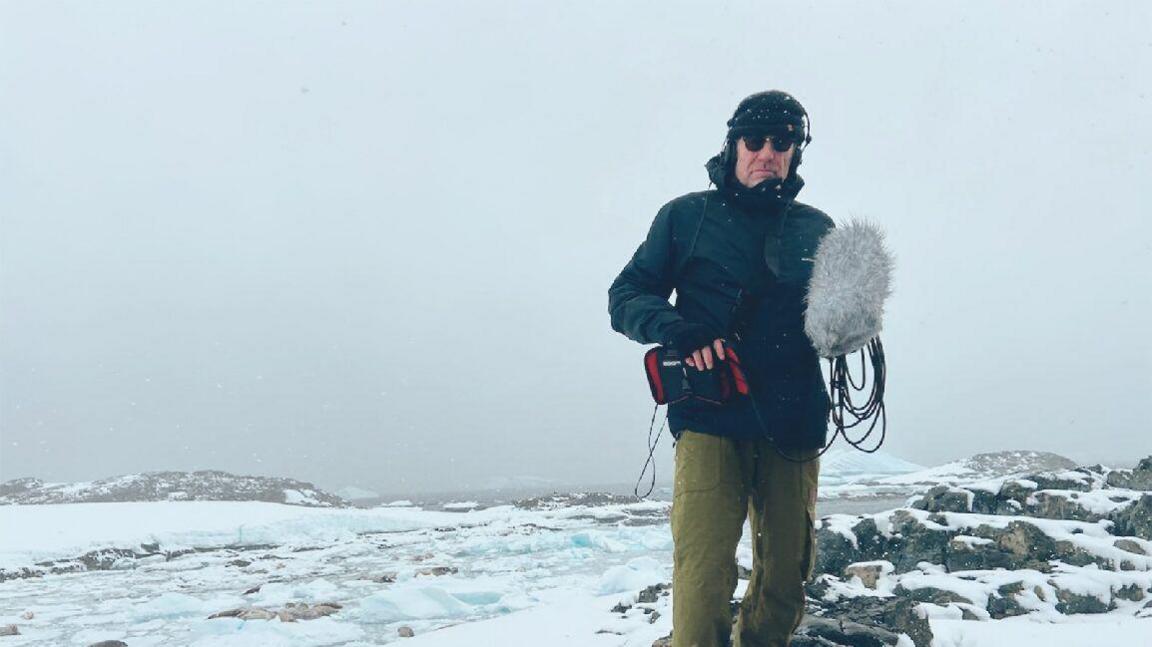How the Highlands prepared me to count penguins in Antarctica

Maggie said the Scottish climate has helped her prepare for the trip
- Published
Edinburgh-born Maggie Coll is preparing for the "adventure of a lifetime" spending five months 9,000 miles from home, counting penguins in Antarctica.
An outdoor enthusiast, Maggie said the conditions and climate of the Scottish Highlands helped her prepare for the trip.
The 31-year-old is a member of a small crew who will count penguins and operate the world's southernmost post office in Port Lockroy during the Antarctic summer.
The crew will live on a small football-pitch sized island with no running water or flushing toilet in near-constant daylight, gathering data for the UK Antarctic Heritage Trust.

As wildlife monitor, Maggie will count and monitor the island's Gentoo penguins
Maggie, who says she is happiest outdoors and discovering new places, previously spent two years travelling in Canada and Australia.
As wildlife monitor she will count and monitor the island's population of Gentoo penguins with data sent back to scientists based in the UK, external.
She said: "Being Scottish, I do spend a lot of time in the Scottish hills and in the winter they say the climate is similar to a Scottish winter.
"So hopefully that’s given me a little bit of preparation for what I’m sure is a very cold environment.
"I think going out to see the incredible wildlife and the landscapes will be amazing. I think it’s going to be the adventure of a lifetime."
Maggie will be joined by base leader Lou Hoskin, museum manager Aoife McKenna, shop manager Dale Ellis and postmaster George Clarke.
Each member was selected with their interests and life experience in mind through a series of interviews.
Maggie said: "The process was quite detailed. We had an interview over Zoom and then we went down to a three-day selection event.
"We worked in pairs to do teambuilding activities - one was building a tent and one of us was in oven gloves and the other was blindfolded.
"Lots of different interesting and fun tasks we did as part of the recruitment process – but hopefully that’s my tent-building done."

Maggie and her crewmates will sleep in a small dormitory in the island's Nissen hut
The crew will live in Base A on Goudier Island, a small harbour of Port Lockroy, known as the birthplace of British Antarctic science.
The small island has three buildings with the largest, Bransfield house, housing a living museum and shop alongside the famous post office.
The crew will sleep in a six-bed dormitory in a steel Nissen hut and pass time by playing board games, watching DVDs and listening to music on a portable speaker.
Each team member packed a personal box with luxury items like toiletries, favourite treats from home and even Christmas and birthday presents - with four members of the team celebrating their birthday during the trip.

The crew Aoife McKenna, George Clarke, Lou Hoskin, Dale Ellis and Maggie Coll
Within two weeks of arriving, the crew will receive a food delivery with supplies to last for the duration of the trip.
For the first time, the base food will be entirely vegetarian - a decision made with sustainability in mind .
The food delivery, packed in July, contains long-life products like tinned vegetables, powdered milk, pasta and rice and "four ginormous bags of Yorkshire teabags".
Despite its remote location, the island will regularly play host to visitors from across the world as cruise ships visit once or twice a day during the season with thousands of postcards sent from the island every year.
Proceeds from the gift shop and post office pay for the operation of Port Lockroy and its future conservation.
Related topics
- Published4 October 2022

- Published22 September 2024
